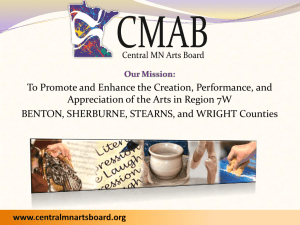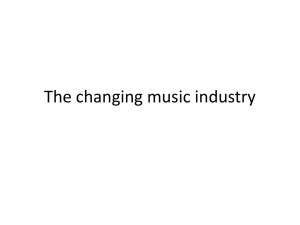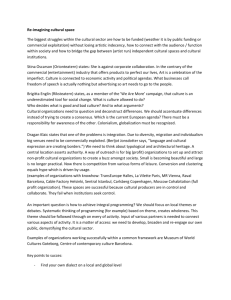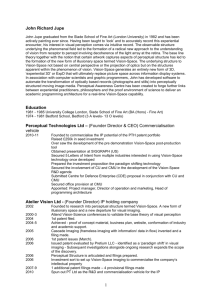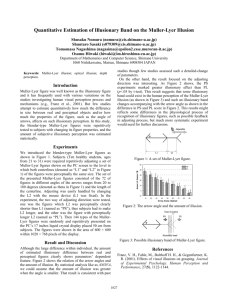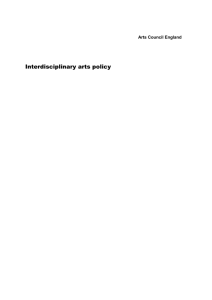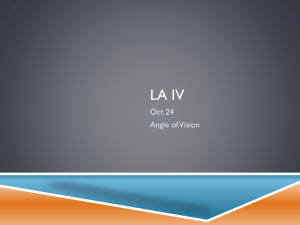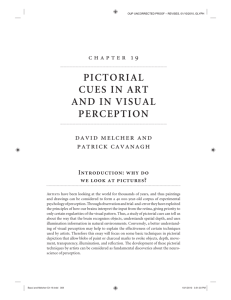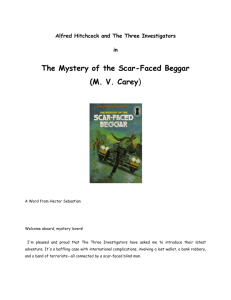Replicating Our Understanding of Vision in Images John Jupe £25
advertisement
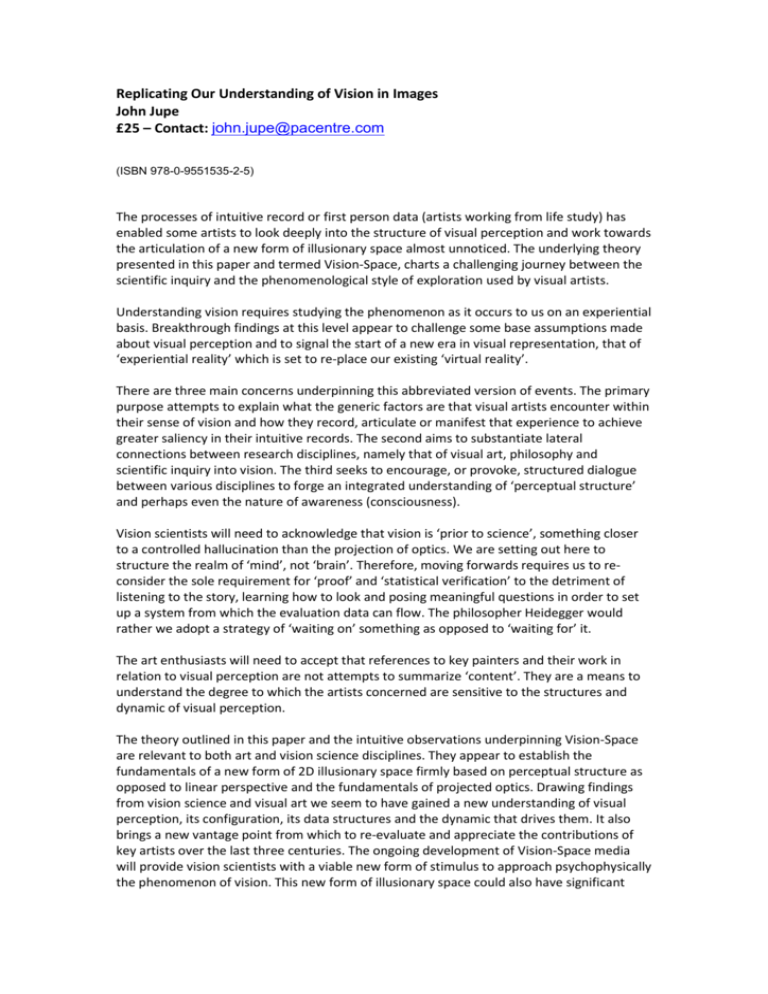
Replicating Our Understanding of Vision in Images John Jupe £25 – Contact: john.jupe@pacentre.com (ISBN 978-0-9551535-2-5) The processes of intuitive record or first person data (artists working from life study) has enabled some artists to look deeply into the structure of visual perception and work towards the articulation of a new form of illusionary space almost unnoticed. The underlying theory presented in this paper and termed Vision-Space, charts a challenging journey between the scientific inquiry and the phenomenological style of exploration used by visual artists. Understanding vision requires studying the phenomenon as it occurs to us on an experiential basis. Breakthrough findings at this level appear to challenge some base assumptions made about visual perception and to signal the start of a new era in visual representation, that of ‘experiential reality’ which is set to re-place our existing ‘virtual reality’. There are three main concerns underpinning this abbreviated version of events. The primary purpose attempts to explain what the generic factors are that visual artists encounter within their sense of vision and how they record, articulate or manifest that experience to achieve greater saliency in their intuitive records. The second aims to substantiate lateral connections between research disciplines, namely that of visual art, philosophy and scientific inquiry into vision. The third seeks to encourage, or provoke, structured dialogue between various disciplines to forge an integrated understanding of ‘perceptual structure’ and perhaps even the nature of awareness (consciousness). Vision scientists will need to acknowledge that vision is ‘prior to science’, something closer to a controlled hallucination than the projection of optics. We are setting out here to structure the realm of ‘mind’, not ‘brain’. Therefore, moving forwards requires us to reconsider the sole requirement for ‘proof’ and ‘statistical verification’ to the detriment of listening to the story, learning how to look and posing meaningful questions in order to set up a system from which the evaluation data can flow. The philosopher Heidegger would rather we adopt a strategy of ‘waiting on’ something as opposed to ‘waiting for’ it. The art enthusiasts will need to accept that references to key painters and their work in relation to visual perception are not attempts to summarize ‘content’. They are a means to understand the degree to which the artists concerned are sensitive to the structures and dynamic of visual perception. The theory outlined in this paper and the intuitive observations underpinning Vision-Space are relevant to both art and vision science disciplines. They appear to establish the fundamentals of a new form of 2D illusionary space firmly based on perceptual structure as opposed to linear perspective and the fundamentals of projected optics. Drawing findings from vision science and visual art we seem to have gained a new understanding of visual perception, its configuration, its data structures and the dynamic that drives them. It also brings a new vantage point from which to re-evaluate and appreciate the contributions of key artists over the last three centuries. The ongoing development of Vision-Space media will provide vision scientists with a viable new form of stimulus to approach psychophysically the phenomenon of vision. This new form of illusionary space could also have significant implications in education, people struggling with dyslexia, autism and other related conditions as well as for all forms of information display.



